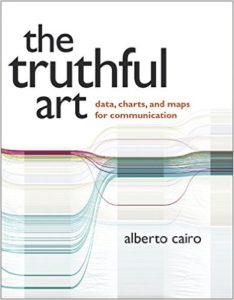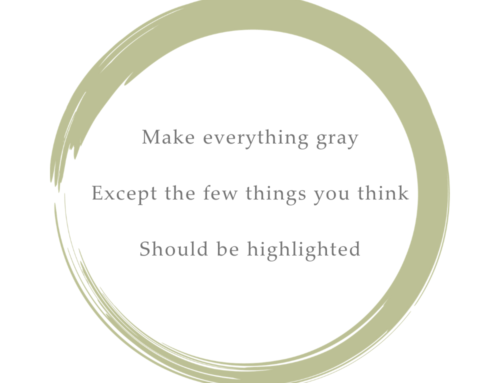Overview
 Imagine a terrific introductory college course presented by a terrific professor.
Imagine a terrific introductory college course presented by a terrific professor.
That’s the feeling I had in reading The Truthful Art, Alberto Cairo’s follow up to his first book The Functional Art.
Whereas his first book took a “look at what you can and should do” approach to help people see and understand data, The Truthful Art is more of a “here’s what you need to know” if you want to be a data journalist — and there’s a lot of things you need to know if you are going to do a proper job.
I’m reluctant to use the term “data journalism” as Cairo’s book is for anyone that that is tasked with helping people make sense of data. The difference is that the data journalist’s work is likely to be public and yours may only be seen by people working in your organization. But while you may not have to make a dashboard that is as polished as an infographic from the New York Times, both you and the data journalist need to adhere to a particular doctrine and have sufficient skills across a wide range of topics if you are going to build functional, truthful, and meaningful visualizations.
First, Be Truthful
If the credo for doctors is to “first, do no harm” Cairo might argue that the credo for data journalists is to “first, be truthful.” Cairo makes the case that a good visualization must be
- Truthful
- Functional
- Beautiful
- Insightful
- Enlightening
And it must be these things in this order of priority. That is, the visualization must first be “relevant, factual, and accurate” and only then should it be “accessible and engaging.” Cairo further states that “honesty, clarity, and depth come first.” Indeed, this is why he bristles with outrage over deceitful graphics like this one.
So, how, exactly, does one create something that is truthful, functional, beautiful, insightful, and enlightening?
By achieving a sufficient level of competence in a LOT of different areas.
And just what are those areas?
The Data Journalism Landscape
In reading The Truthful Art you may feel like you are in a helicopter several thousand feet above the data visualization landscape. In each section Cairo, as expert guide, will gently descend to several hundred feet above a particular area and allow you to examine varied topics including design, statistics, color, storytelling, psychology, and ethics. While the book never gets deep into any of these subjects Cairo does provide excellent resources for anyone interested in exploring a particular topic in depth as every chapter of the book ends with a section titled “To Learn More.”
While Cairo’s writing is disarmingly warm and engaging he takes the responsibility of data storytelling very seriously. By the end of the book you will have an excellent understanding of the investment needed to make a worthwhile contribution to your company, society, or both.
Conclusion
Whether you are new to the field or have been practicing for years, I’m confident you’ll find The Truthful Art, like its predecessor, to be fun, elucidating, and inspiring.
Paperback: 400 pages
Publisher: New Riders; 1 edition (February 28, 2016)






